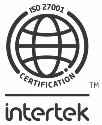Key success factors when implementing a new policy admin system

Modern insurance firms depend upon using the latest and best technology in order to quickly launch new products, anticipate changing trends, develop innovation, and deliver maximum value to customers, partners and employees.
This is particularly important when it comes to an insurer’s policy admin system — which is ultimately responsible for organising the swathe of products offered by the insurer in question.
Insurers looking to upgrade their systems need to consider what a successful and worthwhile implementation looks like so they can be confident with their projected measurable ROI and benefit realisation.
This article will discuss some of the key success factors that insurers need to bear in mind following the introduction of their new admin system and how companies can extract maximum value from the technology.
The challenges of implementation
Before we tackle the measurement of success, we need to first consider the potential challenges that might arise when an insurance firm decides to implement a new system.
A matter of mindset
Something you may find surprising is that the main challenge behind implementing a new policy admin system isn’t a technical one. In fact, it has far more to do with the mindset behind the employees using the new system.
Insurers who have stuck with a legacy system for too long may find that their working methods, and even their creative thinking, are still entrenched with legacy processes. This can, in turn, limit business growth and leave insurers creatively stagnant, as they’re unaware of the real possibilities that newer tech can offer them.
Furthermore, some users can become stuck in their mindset because the current system is the reference model they understand. They can waste time trying to recreate the old system they’re used to rather than embracing new opportunities.
Embracing the new
What is the best way for insurers to overcome this rigidity of thinking? The best method is for insurers to understand what they’re looking to achieve by implementing a new system. Some of these goals could be:
- Launching innovative new products
- Enabling digital journeys
- Connecting with other businesses
- Lowering their cost of ownership
By understanding its long-term goals, insurers can impress upon their employees how the features of the new system can make these overall goals easier to achieve. In doing so, users will be empowered to adopt the practices of the new system, rather than the old one, and will work far more efficiently with their new tech.
Similarly, workshops with the providers can help to take ‘stuck-in-a-rut’ insurers through all the relevant utilities and applications of their new system, so they can understand the new possibilities open to them.
What success looks like
We also have to acknowledge that insurance companies will never be able to measure their implementation's success without having the right metrics in place.
To alleviate this issue when implementing a new admin system, INSTANDA goes to great lengths to understand what outcomes our clients are looking to achieve. From there, we can then work backwards to set their goals and metrics.
Let’s examine some of the goals insurers might want a new policy admin system to help them achieve.
Increased GWP
For instance, one of the biggest goals and success metrics for insurers is an increase in GWP (Gross Written Premium). Achieving this might involve launching new products to find new revenue streams, or establishing new distribution channels or partnerships.
By using more flexible systems, insurers can explore more creative solutions and implement products and propositions that they previously thought were beyond their reach. This, in turn, means they can be more active in the marketplace, thus opening up new revenue sources for businesses.
Lowering costs
Another objective for insurers is to have profitable propositions to the market. Customers in the insurance industry tend to be quite price-sensitive, particularly in times of economic recession. This motivates insurers to bring their prices down to attract new customers. But it’s hard to do so and still maintain a steady profit on each policy.
The main way to do so is by driving internal costs down — essentially by finding ways of saving money by doing more for less. This is one area where new systems that utilise automation can thrive by freeing up employees and resources, so smaller teams of people with more efficient systems can achieve more than larger teams with a legacy system.
Speed of change
Implementing a new policy admin system means that insurers can not only launch more products but can launch them far faster than before. This is because more efficient systems enable insurers to streamline their development time and thus ensure a faster speed-to-market.
In addition, it also means that insurers can swiftly adapt to changes in the market and pivot quicker than their competitors to take advantage of emerging trends as and when they appear. Insurers will, therefore, be able to measure the speed of their product launches as another yardstick for success.
Implementing a new system also makes it easier for insurers to make quick-and-simple changes to their existing policies: measuring the speed of this process (pre and post-system update) is another way of determining its effectiveness.
The value of INSTANDA
By partnering with INSTANDA to move away from a legacy system and implement a new policy admin system, your organisation can easily achieve all of the above goals.
Our no-code platform means that insurers do not need a technical background to realise their ultimate admin system. INSTANDA can also help all stakeholders within your business adopt new practices and embrace new possibilities.
INSTANDA’s ultimate goal is to empower clients to use our platform independently. However, we are, first and foremost, a technology partner. We provide ongoing support and guidance to ensure those using our platform are realising maximum benefit.
We carefully guide all our clients through the new tech adoption and implementation process while working to understand their objectives and building a roadmap to success in the ‘Discovery and Design’ phase.
So, if you’d like to learn more about how INSTANDA can help your firm achieve success, you can book a demo or contact us today.





